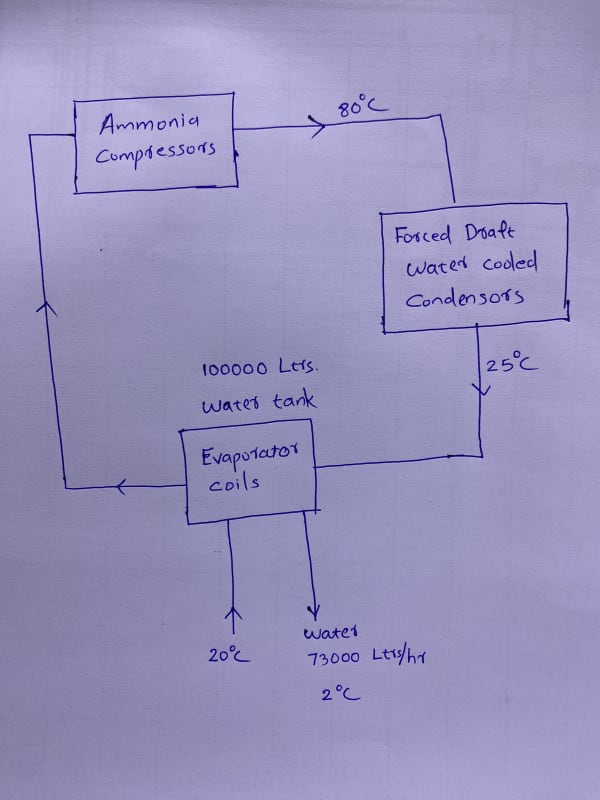Very sorry for my late response.
I'm very thankful to you all for your kind responses and suggestions.
Here i would like to say something more,
1. Why the management given this task to me, even though I'm QA person instead of from engineering side ?: The actual situations you can't believe here,but simply and honestly the reason is nobody here having the capacity to do the calculations/scientific base root cause investigation. But, i accepted this task since I love to learn more and more in any part of engineering and has some skills to survive. So let's leave the management side and go to the solution.
2. The management question was, why we are not getting the required temperature (<7dc) even in the winter, also even though there was good temperature in IBT (around 1dc): (First of all, this was not a sudden problem,having years ago. Just leave the reasons). Then I tried to find out our refrigeration capacity by using the available data. I know the point, 1.2 hrs. of time is required to reach the IBT temperature (1 dc) when we start cooling (with all compressors) of newly filled water of 30dc (using borewell water after R.O treatment). By using this, i tried to find out the capacity in winter. Then I tried the actual heat removed by using the chilled water IN & OUT temperatures and so and so (report attached).
3. Why I asked here about my power of my ammonia system ?: Because, I want to know, how can we calculate with basic equations. To get some threads to do some workouts myself.
4. Why I submitted the report without getting proper answers from the experts like you distinguished peoples?: Like I said in the first point, management don't know the difficulties behind it as a QA person instead of an engineer and management was very hurry (honestly I'm first time approaching to a practical situation regarding this refrigeration in my life). The management won't ready to pay big amounts.
5. What's next?: Now i submitted the report and management will be satisfied since there is nobody to object even my report (because I'm not a engineer to do so.)
But, after accepting this challenge, I'm very interested to study more and approach the issue some more deeply. I'll try whatever possible to do.
So here I'm attaching a relevant portion of my report about this problem before you all. I'm happy to here from you all to learn more. I know there are many mistakes but I was hurry to finish the task, so didn't thought more. But you can teach me about my mistakes.
and still I'm confusing the role of condenser in calculating the power of ammonia refrigeration system. Love to here from you.
Thank you all.

